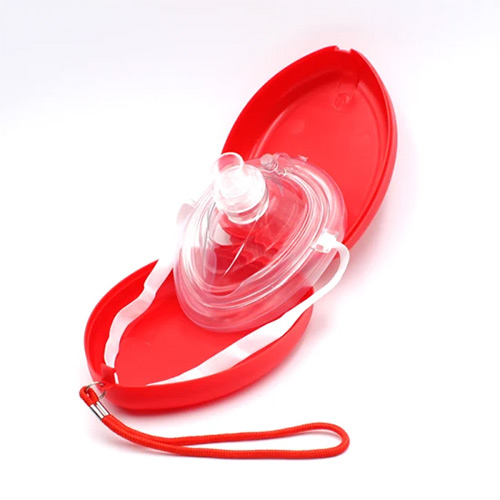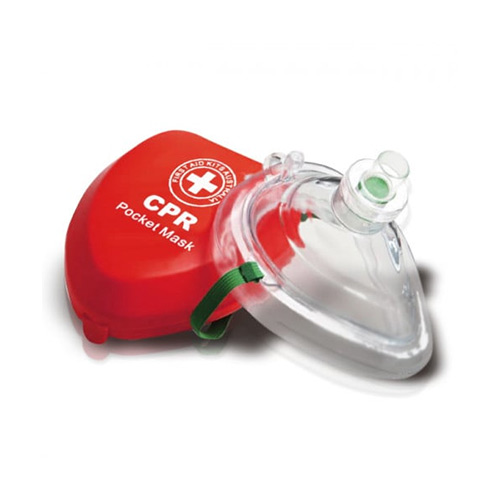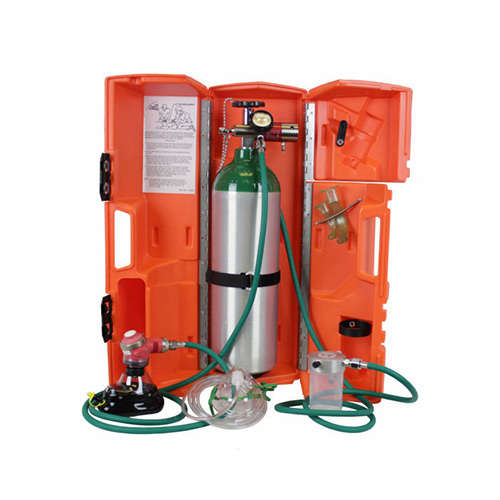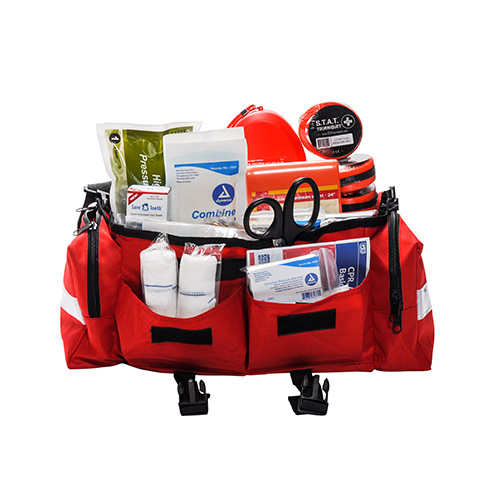Specifications:
- Material: Medical-grade silicone or PVC for durability and comfort.
- One-Way Valve: Prevents the backflow of air, fluids, and secretions from the patient to the rescuer.
- Oxygen Inlet: Allows for supplemental oxygen to be administered if available.
- Size: Typically one-size-fits-all, but some models come in different sizes to fit adults, children, and infants.
- Strap: Adjustable head strap to secure the mask in place during use.
Features:
- Clear Dome: Allows the rescuer to see the patient’s face and monitor for airway obstructions.
- Ergonomic Design: Contoured to fit snugly over the patient’s nose and mouth, ensuring an airtight seal.
- Portable: Compact and lightweight, often packaged in a small carrying case for easy transport and quick access.
- Reusable: Can be cleaned and reused, though the one-way valve is typically single-use.
Applications: Used by first responders, medical professionals, and trained individuals during CPR and rescue breathing in emergency situations. Suitable for use in hospitals, ambulances, schools, workplaces, and public areas.
Advantages:
- Safety: Provides a barrier to prevent direct contact with the patient’s fluids, reducing the risk of disease transmission.
- Effectiveness: Ensures efficient delivery of rescue breaths, helping to maintain oxygen flow to the patient’s brain and vital organs.
- Convenience: Easily carried in a pocket, first aid kit, or emergency response bag.
- Versatility: Suitable for use on patients of all ages, from infants to adults.
Usage Instructions:
- Preparation:
- Ensure the mask is clean and intact before use.
- Position the patient on their back and open their airway by tilting the head back and lifting the chin.
- Mask Placement:
- Place the mask over the patient’s nose and mouth, ensuring a secure and airtight fit.
- If available, attach the head strap to keep the mask in place.
- Rescue Breathing:
- Seal the mask with one hand while using the other hand to pinch the patient’s nose shut (if not using the strap).
- Take a deep breath and blow into the mask’s one-way valve, delivering a slow, steady breath over one second.
- Watch for the patient’s chest to rise, indicating effective ventilation.
- Oxygen Administration (if applicable):
- Attach an oxygen source to the mask’s inlet and set the flow rate as instructed.
- Continue to deliver rescue breaths while monitoring the patient’s response.
- Post-Use:
- Dispose of the one-way valve after use if it is single-use.
- Clean and disinfect the mask according to the manufacturer’s instructions before storing it for future use.








